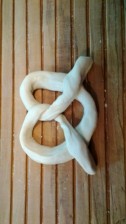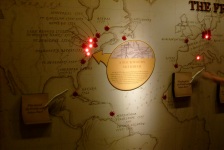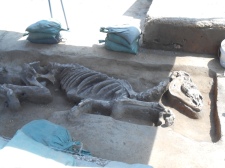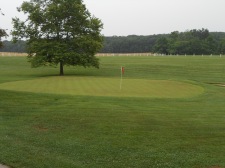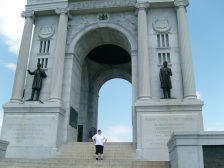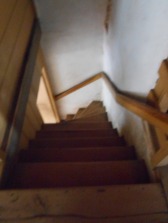Books, Boats, and Busts
Six states. Fifteen historic sites and museums.
Two interactive factory tours. One visit with family. All were part of
a wild first two weeks of July.
My brother and sister-in-law visited earlier this
month, my brother for the first week and my sister-in-law for both weeks
(the last week was part of a requested “history tour” where we visited
most of those fifteen sites and museums). They arrived on Saturday,
June 29 and spent a few days visiting with members of my father’s family
who live in the Harrisburg area before trekking north to Mansfield.
Their first stop on Tuesday was at the Peter J. McGovern Little League
Museum in South Williamsport, PA, which has been remodeled since I
visited it last August during the Peanuts exhibit. That afternoon, we
traveled to Leonard Harrison State Park, home of the Pennsylvania Grand
Canyon (it’s smaller and a lot greener right now than the one in
Arizona). On Wednesday, we went to the National Baseball Hall of Fame
and Museum in Cooperstown, New York, exploring baseball history (it,
too, has changed since my last visit in June 2000—also during a Peanuts
exhibit).
The travels from Mansfield commenced on July 4,
which was spent at Knoebels Amusement Resort, home to the best amusement
park food in the world. That day, Knoebels celebrated the 100th
“birthday” of the Grand Carousel with free carousel rides (which they
enjoyed, and she grabbed several brass rings). We missed the parade
(which passed on the other side of the park), they rode the roller
coasters (enjoyed Phoenix more than Twister), and visited the three
museums in the park (Carousel Museum, Miners Museum, and Knoebels
History Museum). We also saw live bald eagles at the park.
On Friday, we visited the Julius Sturgis original
factory in Lititz, learning how to make pretzels the old-fashioned
way…by hand. The plan was to go to Dorney Park, but another 95 degree
day changed those plans.
Saturday was the “visit family” day, as we visited
with my uncle Wayne’s family (our World War II sailor boy), including my
cousin Terry (who is Wayne’s primary caregiver), cousin Scott, and
Terry’s family. Sunday we rode the Strasburg Railroad and explored the
Turkey Hill Experience (highly recommended for children—and you get free
ice cream and iced tea/lemonade) before heading to Baltimore, where my
brother would fly back to Houston.
The “history tour” began in earnest on Monday
morning with a stop at Mount Vernon on the way to Williamsburg. I had
previously visited Mount Vernon (back in June 1975 on the way back from a
family trip to Pennsylvania), but the interpretive focus had changed
considerably since then. The house was pretty much unchanged (here is
where Washington died, here is the piano Sally played, etc.), but the
outbuildings had a much stronger interpretive focus. Exhibits now
acknowledge the existence of slavery on the plantation. In the
education center, Washington comes to life through interactive exhibits
(oooh, look at the brightly colored and lighted map that shows how the
French & Indian War was the first truly global war).
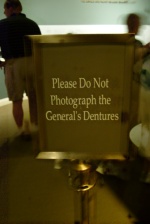
Not
only wouldn’t they let me take pictures inside Mount Vernon, but I also
couldn’t take a photo of Washington’s false teeth. Bummer.
The next two days were spent at Colonial
Williamsburg, which I had visited last summer. This time, I was able to
go on the house tours this time, as my physically limited mother either
stayed at the hotel (first day) or people-watched at the visitor center
(second day). The inside tours were quite interesting, as the costumed
interpreters and guides provided a semi-first person account of the
family who lived there during the 18th century or allowed the
visitors to participate in activities (the first day, my sister-in-law
and I were part of the action in a civil court, and the second day we
helped “storm the palace” in response to Royal Governor Lord Dunmore
removing gunpowder from the magazine to ships along James River).
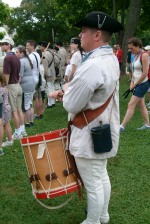
Drummer summoning the mob to get ready to storm the Governor’s Palace. First time I’ve been a part of an aborted rebellion.
Following Colonial Williamsburg, we journeyed to
Historic Jamestowne, part of Colonial National Historical Park. It had
changed since I visited last year; they were now doing archaeological
excavations outside the church (and the church where the House of
Burgesses first met in 1619 was closed for restoration). This time, I
ventured to the Archaearium, which has exhibits on some of the
discoveries made, including the original foundation of the State House
and Jane, who became a meal during the starving time after her demise.
The next stop on the history tour was Monticello,
Thomas Jefferson’s home. Photos were not permitted on the first floor,
so I can’t show you how Jefferson fit his bed into an alcove in order to
save space (nor Jefferson’s polygraph, an 18th century Xerox
machine). The tour guide was definitely old school, as he asserted
that Jefferson’s relationship with Sally Hemings were mere speculation,
yet the basement/cellar area of the home included some interesting
exhibits on slave life on Jefferson’s plantation.
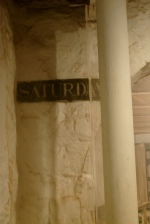
Jefferson
was a smart man, but fortunately he miscalculated for his 7 day
clock–otherwise, I would not have been able to take a picture.
Back in Pennsylvania, we spent a rainy day at
Gettysburg National Military Park and Eisenhower National Historic
Site. It definitely is worth the price to take the shuttle bus to the
Eisenhower Farm, the only home owned by the 34th President of
the United States. From the outside, it looks like a typical
farmhouse, but the interior definitely represents the life of someone
who held great influence on world events. Without a doubt, it’s also
the only farm in Adams County that includes its own putting green.
Back at Gettysburg, the visitor center is celebrating the 150th
anniversary of the battle with a new exhibit (“Treasures of the Civil
War”) that focuses on the leaders of both Union (Army of the Potomac)
and Confederate (Army of Northern Virginia) forces. Because of the
weather, we didn’t do the entire auto tour, but we did locate the Texas
monument at the battlefield (which is considerably smaller than the
Pennsylvania monument).
The final day of my sister-in-law’s history tour
took us to two places I have visited several times: Daniel Boone
Homestead (where I worked as a “Government Service Intern” during the
summer of 1986, long before that title took on other connotations during
the Clinton administration) and Valley Forge National Historical Park.
At Daniel Boone Homestead, we arrived early enough to get a personal
tour conducted by one of my students who is working there as an intern
this summer, and they even opened up one of the buildings for me to take
pictures.
By the time we got to Valley Forge, it was
extremely hot, so my sister-in-law opted to watch the orientation video
(which apparently has not changed since when I saw it in 1978, based on
her description of it), then we took the auto tour of the park. After
all, it is hard to envision Washington’s army suffering in the cold and
damp weather when it’s 98 degrees outside.
So, back to the title of this blog. Books—bought
lots of them, including a New Testament that has parallel text in
Pennsylvania German and English at the Lancaster Mennonite Historical
Society. Boats—one of the purchases made at the gift shop at Monticello
was a cloth version of Lewis and Clark’s boat from their expedition
(including a dog and Sacajawea). Busts—my office will soon include a
lovely bust of Benjamin Franklin, which was purchased at Valley Forge.
I’d move him there now, but I’m afraid he would start sweating in the
90+ degree temperatures there (the heat has already led to bobble head
of one of the Founding Fathers becoming unglued from the base). And the
cell phone that bounced its way across Main Street in Mansfield on July
4 and was rescued by a good Samaritan (who then called my home to alert
me of its location) is still working. The case is a bit scuffed, but I
don’t need an Otter box to protect my Windows phone.












